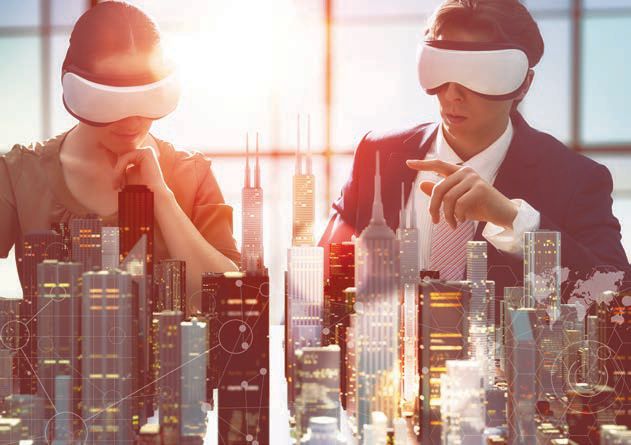Reality Check: Virtual And Augmented Reality Trends
Technology and science fiction have always been intriguing to me. “The Matrix,” a 1999 film that depicts a dystopian view of the future, ignited my interest in the possibilities and potential of the Internet. Like Morpheus and Neo, I too wanted to know what was “real” and how deep the rabbit hole goes.
My journey to understanding networks led me to Cisco, where I have worked in various product management and marketing roles for almost 20 years. Over the last decade, I have led a team that analyzes and forecasts global Internet growth and trends (see Cisco Visual Networking Index/www.cisco.comgo/vni). Our passion and objective is to anticipate the future so that our customers and we can prepare for the next wave of innovation.
Today, new applications, devices and faster/smarter networks are fueling another phase of the digital revolution: virtual reality and augmented reality (VR and AR).
Although initially implemented in entertainment and gaming environments, VR and AR are now gaining significant traction in business and industrial settings. What’s the attraction? How about more visual experiences, higher productivity and better interactions with employees and customers?
Across a wide variety of business verticals, AR and VR are playing new and, in some cases, vital roles in improving business processes and customer service.
Defining VR and AR
From an end-user perspective, there are commonalities between AR and VR experiences, but there are distinctions between the two application types:
VR is an immersive multimedia or computer-simulated environment that allows users to interact with it. Examples include aviation training, medical/surgical training and mental treatment.
AR is a view of a real-world environment supplemented and enhanced by computer-generated sensory inputs, such as sound, video or graphics. Examples include tourism, real estate and retail product visualizers (clothes or furniture).
Affordability and Availability
For any technology to be adopted on a large scale, it must be affordable and easy to use.
Today, many VR/AR applications are supported with smartphones that are inserted into relatively low-cost ($10 to $50) goggles or box viewers. More expensive ($250 to $500) VR/AR headset options are available for purpose-built or high-end applications.
Based on Cisco VNI research, global VR/AR headsets are projected to grow from 18 million in use in 2016 to nearly 100 million in use by 2021—that’s five-fold growth. More than half of these headsets will be connected to smartphones by 2021. The remaining headsets will be connected to PCs or gaming consoles, and a small number will be standalone.
The bottom line is the basic infrastructure for VR/AR growth is in place. Whether at home or in the workplace, we can use many of the devices and network resources we already have to begin our VR/AR journey.
Experience VR/AR Now
Many business verticals have already begun to integrate VR/ AR applications into their daily operations and workflows. Here are a few examples:
Health care: Last year, for the first time in medical history, cancer surgeon Shafi Ahmed performed an operation using a virtual reality camera at the Royal London hospital. Students and doctors from around the world could participate in the operation in real time through a website (with VR goggles). Hospitals are also using VR to reduce patient stress, make children more comfortable, and speed up the recovery of those who have suffered strokes (learn more at http://medicalfuturist.com/5-ways-medical-vr-ischanging-healthcare/).
Retail sales: How would you like to try on an outfit without the hassle and effort of going into a dressing room? Companies, such as Converse, GAP and H&M, are making virtual dressing rooms available to their customers today. Home improvement outlets, such as Lowes and Home Depot, are using VR/AR to let you see what your remodeling project will look like before you touch a tool or a paintbrush.
Real estate/tourism: Brochures and pictures don’t always tell the full story about a house or apartment. A virtual tour can give you a complete perspective of each room and the surrounding neighborhood. Virtual real estate tours also allow agents to show more properties/units to prospective clients without onsite visits. Vacation and travel companies can also provide a more realistic sense of what a trip will be like before tickets and itineraries are booked.
VR/AR applications are emerging in virtually every major business vertical (for example, manufacturing, transportation/ shipping, education and energy/utilities).
The Network Role in VR/AR
Transparently, networks are at the core of every VR/AR application. Immersive video and multimedia experiences place new demands on networks in terms of bandwidth, lower latency, and security requirements. Cisco and its customers and partners are focused on continuous innovation to bring VR/AR visions to life. Perhaps it’s time for your business to have a VR/AR reality check?









